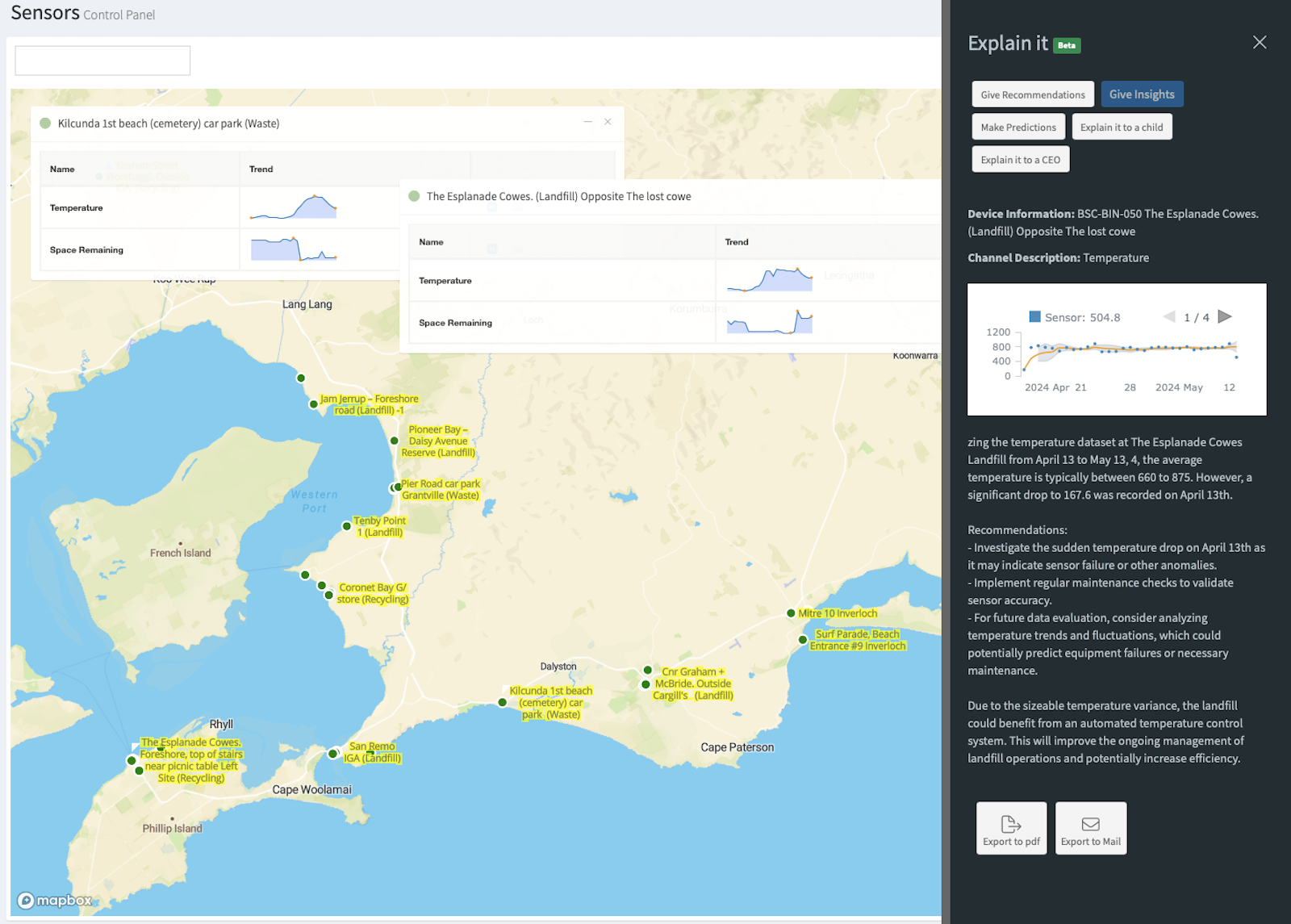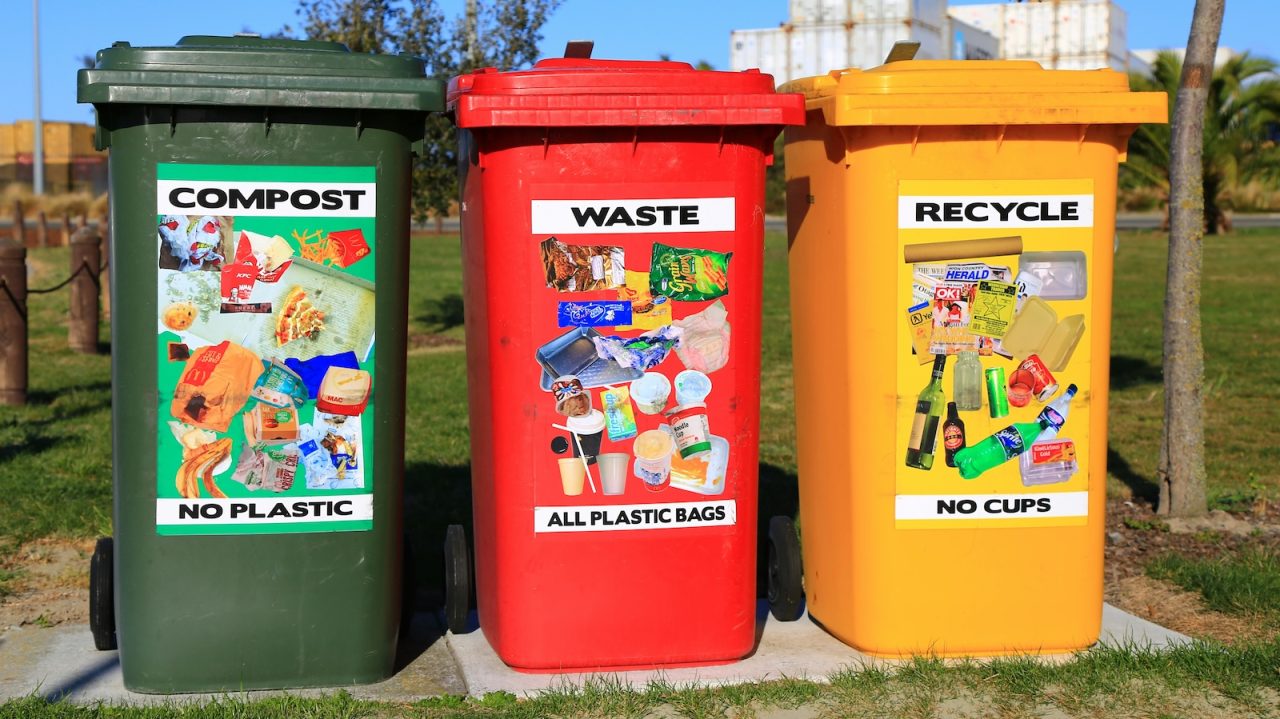In this Article
Executive Summary
In the picturesque region of Bass Coast Shire, Victoria, which includes tourist hotspots like Phillip Island, managing waste is crucial for sustainability and community satisfaction. This case study explores the integration of Ultrasonic Technology in Waste Management. Specifically the Milesight EM400MUD NB-IoT ultrasonic sensor on the Telstra Cellular NB-IoT network. These components were used to transform waste management practices. This project, deployed and integrated by Minnovation Technologies, provides a comprehensive end-to-end solution that optimises operations, enhances environmental protection, and improves the quality of life for residents and visitors alike.
Introduction
Bass Coast Shire, covering 866 square kilometers with a population of 35,327, faces unique challenges in waste management due to its geographical spread and significant tourist influxes. Traditional methods of waste collection have proven inefficient, often leading to unnecessary costs and environmental impacts. The adoption of advanced ultrasonic technology in waste management, specifically through the implementation of the ultrasonic waste management sensors, aims to address these issues by providing precise, real-time data on waste levels to optimise collection routes and schedules.
Project Background and Objectives
The primary motivations for deploying ultrasonic technology in waste management within Bass Coast Shire included:
- Reducing Inefficiencies: Traditional waste collection methods led to suboptimal resource use and operational inefficiencies.
- Enhancing Resource Management: There was a critical need to streamline operations to cut costs and reduce environmental impacts.
- Improving Environmental and Community Well-being: Cleaner public spaces are vital for maintaining the area’s attractiveness to tourists and ensuring a high quality of life for residents.
The objectives of the project were to leverage the capabilities of the Milesight EM400MUD NB-IoT sensors, supported by the reliable Telstra Cellular network, to transform waste management from a static, reactive system into a dynamic, data-driven model.
Technology Deployment
Milesight EM400MUD NB-IoT Sensors
The heart of this transformation lies in the deployment of Milesight EM400MUD NB-IoT sensors across public waste bins in the Shire. These sensors utilize ultrasonic technology to measure the fill levels of bins accurately and efficiently. The sensors also monitor temperature and detect bin tilting, which can indicate vandalism or operational issues.
Telstra Cellular Network
The Telstra Cellular network ensures seamless and reliable transmission of data from the sensors back to central management systems. Its extensive coverage and robust performance are critical in areas like Bass Coast Shire, where bin locations can be spread across remote and sparsely populated tourist locations.
Minnovation Technologies: End-to-End Integration
Minnovation Technologies led the complete integration of this project, providing an end-to-end solution that included:
- Device Installation: Strategic placement and installation of sensors across targeted waste bin sites.
- Data Management System: Setup of a central data repository to collect and analyze sensor data.
- Event and Network Management: Implementation of systems to handle alerts, manage network issues, and ensure data integrity and security.
- Visualization Tools: Development of dashboards and reporting tools to visualize waste management data, enabling proactive operational adjustments.
Impact Assessment
Operational Efficiency
The introduction of ultrasonic technology in waste management has significantly optimized waste collection operations:
- Dynamic Routing: Sensor data allows for real-time adjustments to waste collection routes, ensuring that only full bins are emptied, which reduces unnecessary trips and saves fuel.
- Cost Reduction: Efficient routing and scheduling have decreased operational costs by an estimated 25%, mainly through reduced fuel consumption and labor costs.
- Environmental Benefits: The reduction in operational frequency has also decreased the carbon footprint of waste management services, contributing to the Shire’s sustainability goals.
Adaptability to Seasonal Demands
The system’s ability to adapt to seasonal variations in waste generation has been particularly beneficial. During peak tourist seasons, the data-driven approach allows for increased collection frequencies to handle higher waste volumes, whereas, in off-peak seasons, the frequency can be reduced to save resources.

Ultrasonic Technology in Waste Management (NOTE: Data shown in image is simulated)
Community and Environmental Benefits
The deployment of ultrasonic technology in waste management has brought several benefits to the Bass Coast Shire community:
- Enhanced Public Health and Safety: Quick responses to tipping events and high temperatures in bins improve public safety and reduce the risk of fires.
- Improved Aesthetic and Environmental Appeal: Efficient waste management helps maintain the scenic beauty of the Shire, which is crucial for sustaining tourist traffic and supporting local businesses.
- Increased Community Satisfaction: The community enjoys cleaner public spaces and reduced noise and pollution from fewer waste collection trucks.
Data-Driven Continuous Improvement
The wealth of data provided by ultrasonic sensors allows for ongoing optimization of waste management processes. The AlphaX platform’s analytical tools enable the identification of trends and the fine-tuning of operational strategies, ensuring that the waste management system continually adapts to changing needs and conditions.
Conclusion
The integration of ultrasonic technology in waste management, exemplified by the deployment of Milesight EM400MUD NB-IoT sensors on the Telstra Cellular network in Bass Coast Shire, marks a significant advancement in public service management. This project, implemented by Minnovation Technologies, not only demonstrates the practical benefits of innovative technological solutions but also sets a benchmark for similar regions globally.
The initiative has enhanced operational efficiency, reduced environmental impact, and improved the quality of life, proving that smart technology can lead to sustainable, community-focused outcomes.
Related Blog Posts
How Smart Cities Connect: Getting Started with Edge AI and IoT Technology
How to Get Started with Edge AI and IoT Technologies in Smart Cities: Overcoming Integration Challenges In recent years, the concept of smart cities has evolved from a futuristic Read More
5 Step Strategy: Ensuring Security and Privacy in 15-Minute Smart Cities
Introduction Ensuring security and privacy in 15-minute smart cities is a critical challenge as urban areas become increasingly connected through IoT and edge AI technologies. These cities aim to Read More
What is a smart city and the challenge of legacy systems
How to Get Started with Integrating Legacy Systems in Smart Cities Smart cities are transforming urban landscapes by leveraging technology to improve the quality of life for residents. However, Read More




